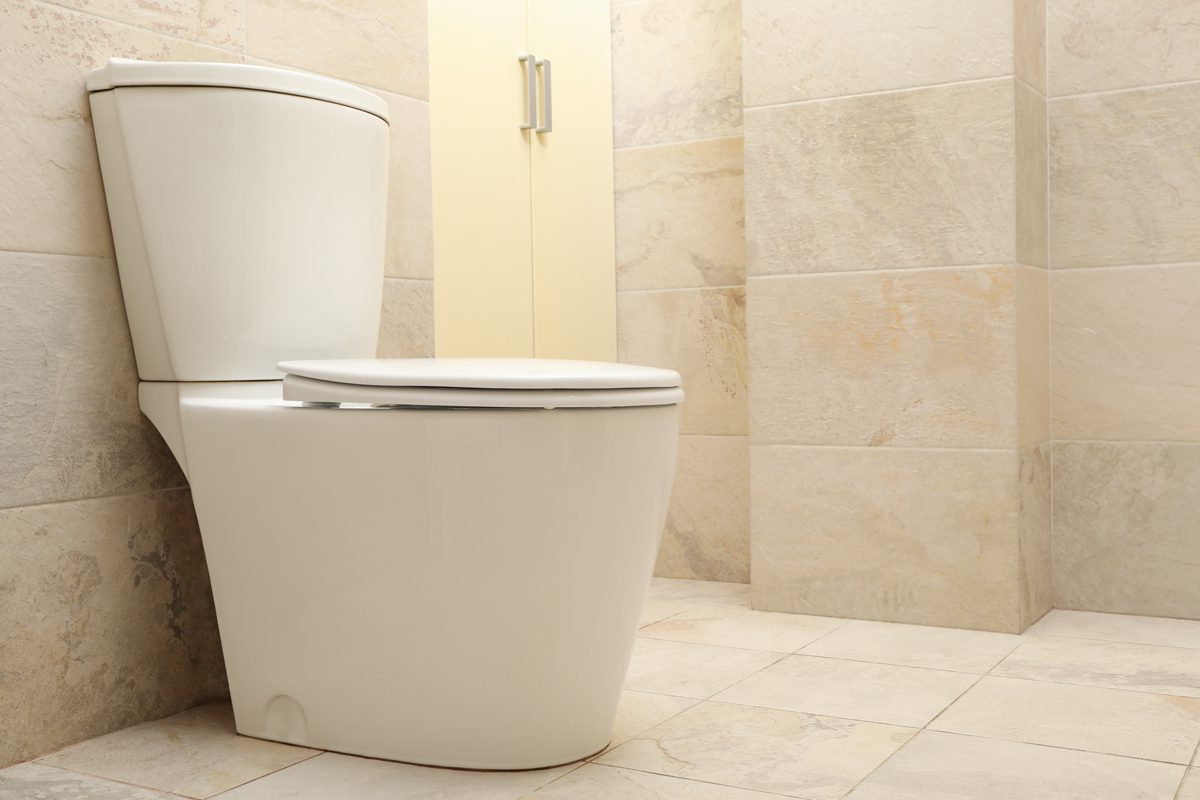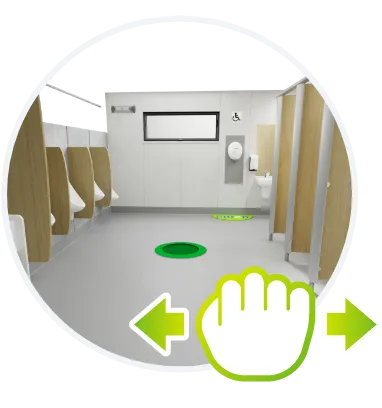Table of Contents
What is the Toilet Sneeze Effect?
The toilet sneeze effect may sound a bit comical, but the results of a toilet sneeze can be quite unpleasant when you realise what actually happens. The toilet sneeze effect is what takes place after you flush the toilet. Flushing pushes 1,000 invisible tiny droplets and aerosol particles dancing into the air to find all sorts of places to land.
These droplets may potentially contain infectious bacteria and viruses, such as coronavirus. This can happen anywhere – at home and in the workplace. The more people that use a toilet, the more likely it is that germs can travel easily between people.
The ‘toilet sneeze’ term was created by Dr Charles Gerba, after he studied how toilet flushes spread bacteria through the air. Dr Gerba discovered that large amounts of germs and bacteria collect in the toilet bowl. Then with a flush, these are projected like an invisible mist up into the air and can reach up to 8 feet away. Several flushes don’t clean away bacteria and these germs can disperse onto surrounding areas – such as floors, surfaces and sinks. What’s more, your face can also be sprayed with germ-filled particles if you’re near the toilet.
Do Germs Spread When Toilets Are Flushed?
Some people may feel a little doubtful that the toilet sneeze effect is real. However, a recent study by One Poll, commissioned by Harpic, proved with the use of high-speed camera technology that the toilet sneeze is a watertight fact. Researchers captured images of minuscule drops of aerosolised toilet fluid flying from the toilet, landing on surfaces and even on people’s bodies.
Study Proves The Toilet Sneeze Exists
The One Poll study quizzed 2,000 adults about their toilet habits. 52% of those questioned did not put the toilet lid down before flushing. Even with 72% of respondents stating that they are paying a great deal more attention to hygiene than ever before, the toilet sneeze effect does not seem to have made it onto their radar. This is also relevant for people using urinals. Alarmingly, 57% of the urinal flush can splash onto the person next to the urinal in seconds, according to the One Poll study data. Clouds of virus-containing particles are formed, plume out into the air and land everywhere, most disturbingly on people’s faces. With viruses and how they spread being an important topic of conversation in recent times, this evidence is a little worrying. In truth, it proves that virus particles from toilets can hang around in the air for up to 24 hours, which is a concern for people who want to stop the viral spread and increase hygiene in personal shared spaces.
How Does The Toilet Flush Spread Germs?
So, how do the particles get through the air? Toilet flushes are designed to be strong enough to remove faecal particles from the bowl. This power then drives the tainted droplets up and through the air. This hidden fog of bacteria, naked to the human eye, can float on natural air currents, landing on handles and other touchpoints, which makes contamination from person to person more likely. Not only can these droplets be inhaled, but germs from contact points can easily get into the body through neatening hair, touching the face or even sharing the same space. Workplaces need to stay safe so it’s vital that people are aware of cleanliness procedures especially in the washroom environment to maintain healthy environments at work.
Why Don’t People Put The Lid Down?
What are the reasons behind a lack of toilet lid use? It seems that half of us just don’t know about the toilet sneeze effect and the potential risks involved. Some people don’t like touching any toilet lids at all, as they feel this is unwanted contact with toilet germs whereas in actual fact it can actually help. A small majority admit to forgetting about this small act of hygiene as their mind is on other things. Some people even concentrate on other things such as reading and being on their phones when on the toilet. One thing is for sure, after viewing images of bacteria flying out of toilets like fireworks, 95% of people wanted to make a change and put down that lid. Replacing the lid before a flush doesn’t guarantee 100% removal of bacteria-filled air, but it does severely restrict germ movement and improves hygiene in restrooms.
The Answer: Close the Toilet Lid
Why is the toilet lid the solution to this problem? Well, it works in a very simple way. The toilet lid blocks the explosion of germs and bacteria into the air and can potentially help remove the risk of spreading viruses, such as coronavirus and other possibly risky bacteria. Just this small, unassuming action can make a big difference in promoting good hygiene practice and cleanliness at home and in the workplace.
Take a look around…
Use our virtual washroom to see how our solutions will elevate your washroom experience
How Can You Improve Toilet Hygiene?
Putting some cleaning preparation and planning in place can also improve the situation and help block the toilet sneeze. Include the following tips in your bathroom or workplace cleaning routine to ensure a more hygienic experience for everyone:
- Wash hands after using or touching the toilet for 20 seconds per time to reduce bacteria passing from person to person. Provide hand soap in dispensers or hand sanitiser at washroom entrance points to promote use.
- If you want added protection, clean the toilet seat before use with a proven, effective toilet seat cleaning product that can be provided to the end user.
- Use a toilet brush to regularly remove germs from those hard-to-reach places to increase toilet hygiene and reduce the impact of the toilet sneeze effect.
- Use automatic cleaning solutions such as this urinal cleaner.
Want more facts and stats about hygiene and reducing your exposure to harmful germs? Why not read our blog that provides 24 hygiene facts that will shock you in, all about helping you maximise cleanliness at home and at work.
Install Clean Air Solutions
While looking at solutions for the toilet cubicle may be your first thought, if droplets of bacteria and viruses do ‘sneeze’ into the air, it’s worth investing in air care solutions too. Air fresheners are one way to treat the air, but products like commercial air purifiers can actually enhance air quality and destroy airborne germs and microbes. For example, the Citron SaniZone is a 24/7 air treatment unit that is designed to target bacteria, viruses, mould and other impurities.
Install Hand Dryers with HEPA filters
Another way to create a safe environment and ensure the air in your washrooms is pleasant is by installing effective hand dryers that feature HEPA filters. What is a HEPA filter? They are a form of pleated air filter that are designed to trap thousands of air particles when a user dries their hands and from the surrounding air too. This reduces the chance of cross-contamination within the washroom, for a safer environment. View Citron’s range of hand dryers that feature HEPA filters.
Improve Toilet Hygiene with Citron Hygiene
Citron Hygiene is passionate about building healthy spaces in the places we live, work and play. Hopefully, these tips should help you both at home and in the workplace. If you’re a business that wants to improve its toilet hygiene, why not explore our range of commercial hygiene products that can be powerful heroes in the battle against toilet germs. Alternatively, get in contact with us today and learn how we can support your business by calling us on 08000 66 55 52.

